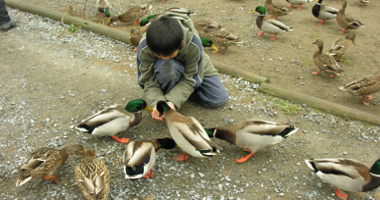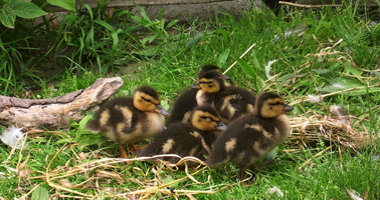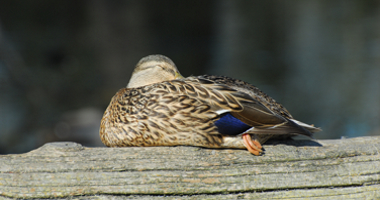Hummingbirds
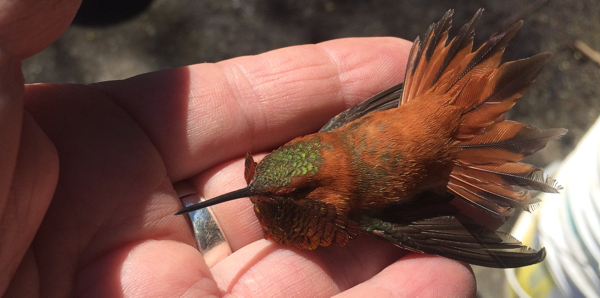
For being the Sanctuary’s smallest birds, hummingbirds are also the feistiest and most charismatic. The Anna’s Hummingbird (Archilochus anna) and Rufous Hummingbird (Selasphorus rufus) occur here, but there are 17 species across North America. Hummingbirds mainly feed on sugary liquid found inside flowers called nectar. When feeding from flowers,they transfer pollen stuck to their feathers to surrounding flowers, making them important pollinators. In fact, some flowers have evolved alongside hummingbirds and depend solely on them for pollination. Because these birds are so connected to the flowers they feed from, migration and blooming times are closely linked. In the Pacific Northwest, in early March, after the cold and damp winter, the first spots of colour begin to appear as Red-flowering Currant and Salmonberry open their delicate pink petals just in time for the first bright rusty-coloured male Rufous Hummingbirds to arrive from their southern wintering areas in the south of Mexico.
These tiny birds have many adaptations to help them access the nectar deep within flowers. Their long, thin bills can fit inside tube-shaped flowers easily, and they have a forked tongue that acts like a pump to draw out nectar. Hummingbirds have a very high metabolism in order to support their acrobatic lifestyle. They need to eat one and a half times their body weight in nectar each day and have a heartrate of about 1200 beats per minute (10 times as fast as yours!). While feeding from flowers, these little birds do something that no other bird can do- they can hover in one spot almost indefinitely. They do so by flapping their wings in a figure 8 pattern at a rate of 40 to 60 wingbeats per second. This also allows them to fly in any direction- forwards, backwards, and side to side. One of the most remarkable aerial feats is the dive display of male hummingbirds. When the male finds a female he wants to impress, he flies to a height of 20to 40 m, then plummets down towards the ground at up to 95 km/h before swerving back up at the last second. You can actually identify the species depending on the sound he makes at the end of his dive. Anna’s Hummingbirds make a sharp squeak, while the Rufous make a chu chu chu chu noise.
Both Anna’s and Rufous Hummingbirds nest here in the Sanctuary. The females build petite cup nests made of spiderwebs, moss, down, and soft fluff from cattails or willow catkins, with the outside covered in lichen for camouflage. The spiderwebs give the nest a stretchy quality, allowing the nest to stretch and expand as the chicks inside grow larger. 1 or 2 eggs are laid, with an incubation period of 12 to 14 days.
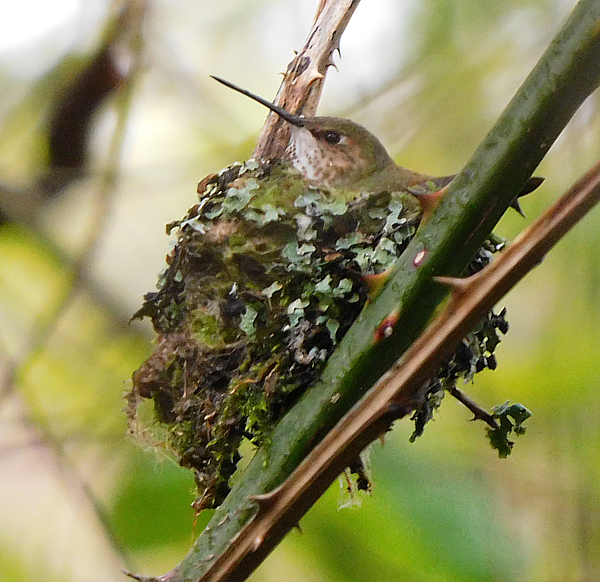
Many male Rufous Hummingbirds continue on their migration after mating season. Around late July, after raising and fledging their chicks, the female Rufous Hummingbirds begin the long journey south to Mexico following the males, where they spend the spend the winter in warmer climates.
Dr. Christine Bishop has been banding the Sanctuary's hummingbirds since 2015, and there are at least 800 hummingbirds wearing small aluminum leg bands as a result of this project. When you are watching just a few at our bird-feeders, just know that there are a lot more out there than you think. One day, over 30 were banded just at one feeder near the Gift Shop.
A few key research references for more information:
Rufous Hummingbird- State of the Science and Conservation






